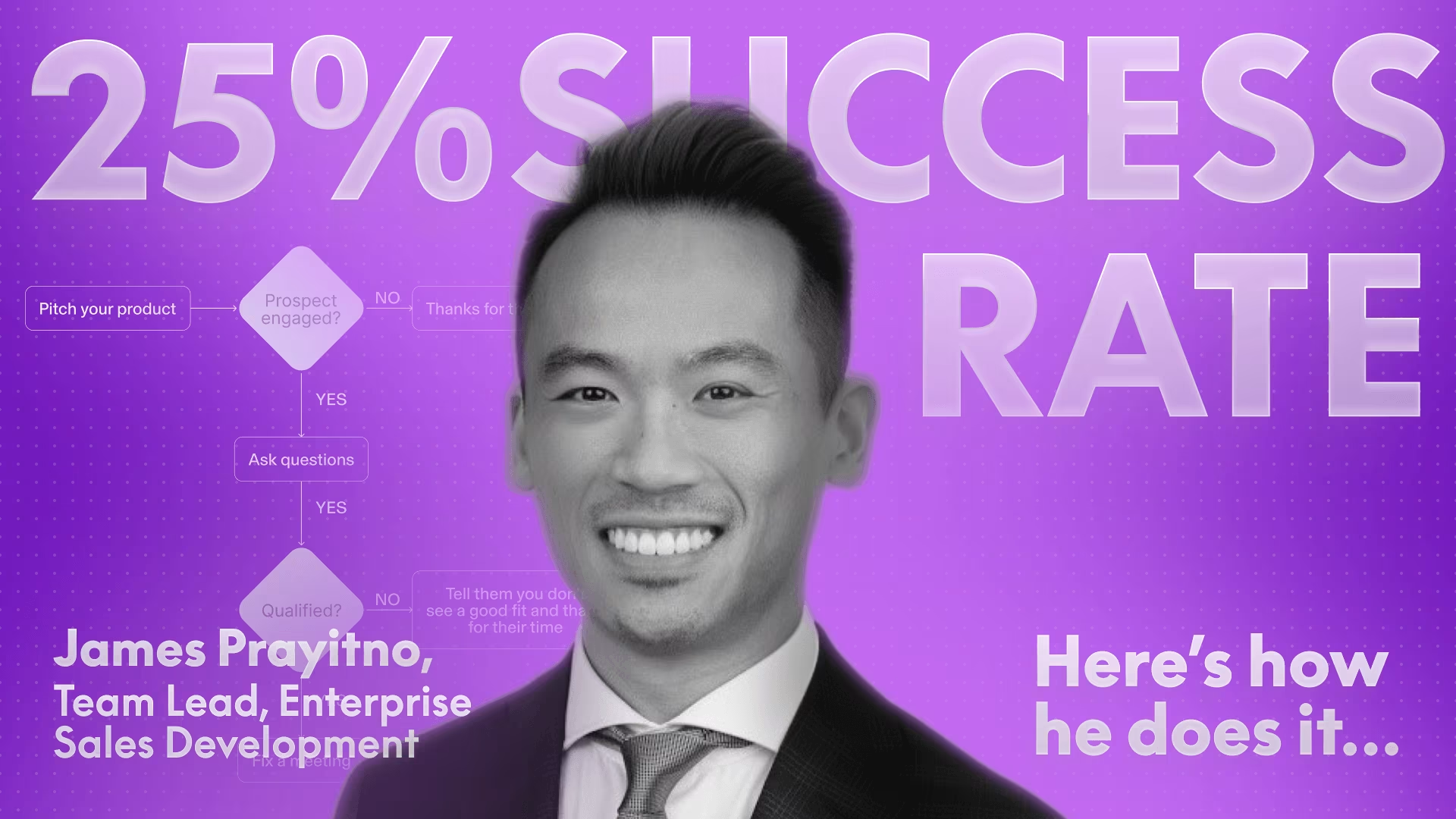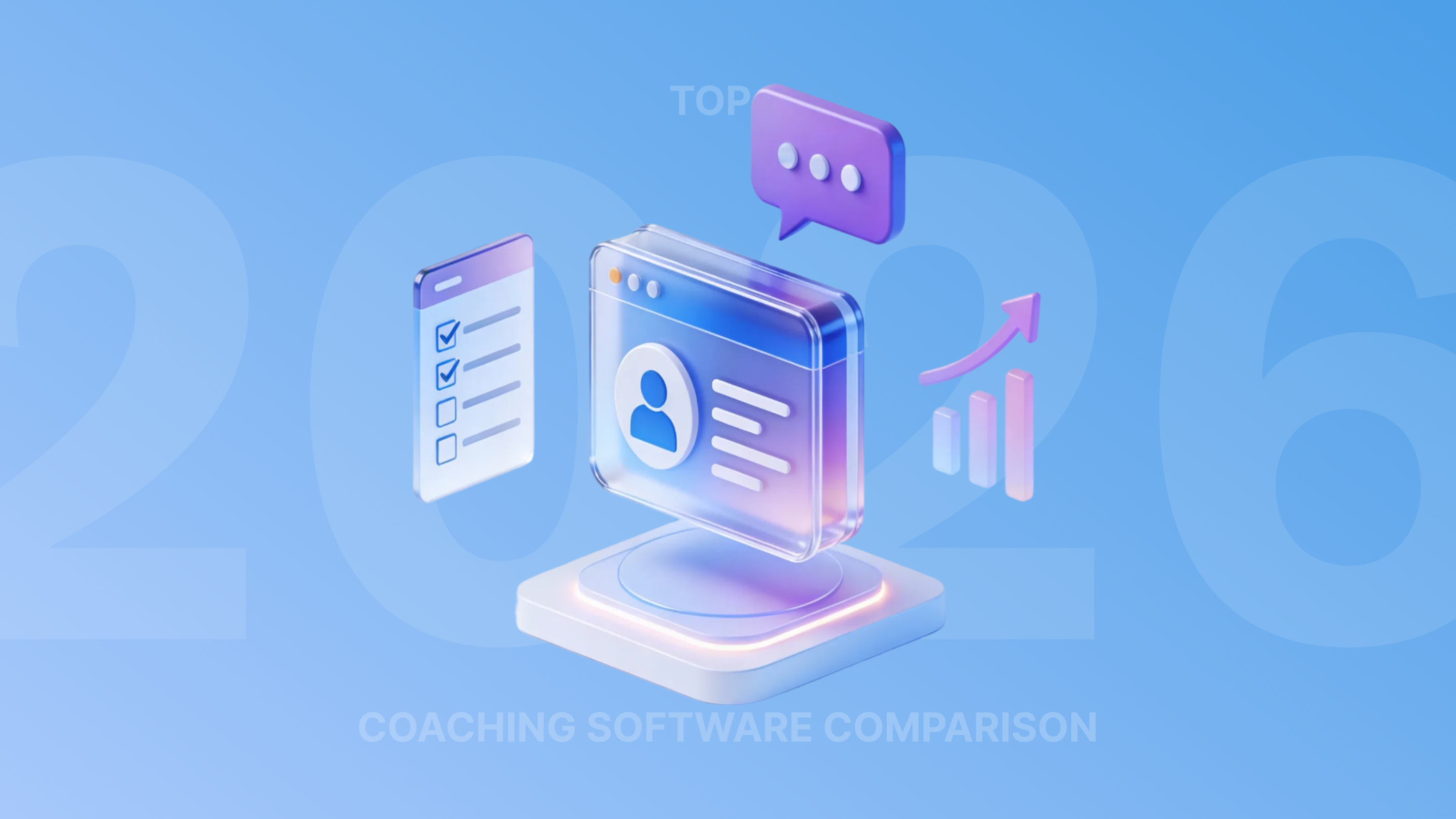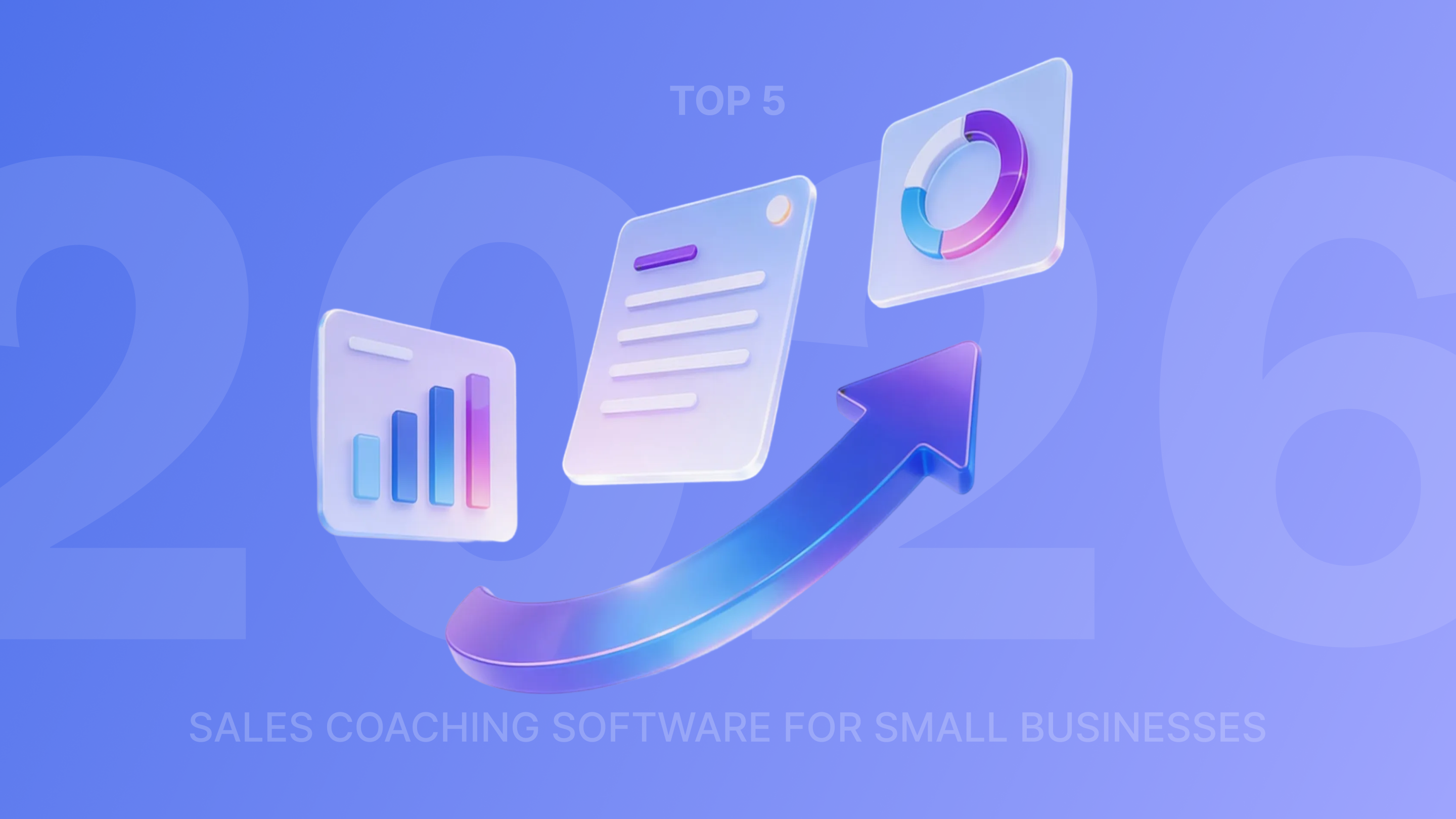The Nooks cold call formula that converts at 25%

People don’t hate cold calls. They hate bad ones.
Cold calling still works. You just need a better strategy.
James Prayitno, one of the top outbound performers at Nooks, has a 25% cold call conversion rate — from conversation (2-min minimum) to meeting. His secret? A clear framework, sharp persona targeting, and problem-first messaging that lands — fast.
This playbook walks through his exact talk track, strategic mindset, and how he’s booked meetings with leaders at some of our biggest enterprise logos.
The Foundation: Repeatable Before Remarkable
Before James got great, he got consistent.
He doesn’t wing it — he runs a “script.” Not to sound robotic, but to stay grounded. His belief?
“You have to be repeatable before you get good.”
Every cold call follows the same framework:
- Opener
- Confirm Persona
- Bucket Question
- Explore Pain
- Pitch the Problem
- Close for the Meeting
Let’s break it down…
Step 1: The Opener
James skips the classic “Do you have 20 seconds?” permission ask. He prefers transparency:
“Hey John — James giving you a call here from Nooks - phoning in regards to a convo we had with ________ OR phoning in regards to overcoming outbound prospecting challenges.
Did you have a short moment?
This gets straight to the point, disarms the prospect, and gives him a chance to earn their attention.
Step 2: Confirm the Persona
James adapts based on who he's talking to. He confirms their role like this:
- Manager/Director: “Saw you're leading the SDR team at [Company]…”
- VP/SVP: “Saw you oversee the sales org at [Company]…”
- Ops/Enablement: “Looks like you're supporting outbound efficiency across teams…”
Then he pivots to a relatable bucket question.
Step 3: The Bucket Question
If it’s a true cold call:“We’re working to have some dialogue with your peers around overcoming challenges like low connect rates, time wasted on research/admin, and inefficient coaching.
Curious — are any of those challenges top of mind for your team?”
If he has context on the account/prospect:
“Recently connected with X last summer around overcoming XYZ^, there was definitely interest to press on, but it wasn’t the right time due to ABC.
Wondering if you are still involved in that initiative and if it’s worth revisiting now?”
If the answer is vague (“Yeah, all of them”), James follows up with:
“If you could pick one thing to make your life easier tomorrow, what would it be?”
This personalizes the conversation and gets prospects to self-prioritize.
Step 4: Dig into the Pain
James adjusts his probing based on persona:
- Managers: “Are reps spending too much time dialing vs. actually selling?”
- VPs: “Are you being asked to create more with less while still hitting pipeline targets?”
- Ops/Enablement: “Are you seeing pressure to consolidate tools while improving productivity?”
He also layers in contextual questions:
- “How many calls are reps making daily?”
- “Are your reps phone numbers showing up as spam?”
- “What’s your tech stack — Outreach, Salesloft, ZoomInfo?”
- “How are you coaching today — live or in 1:1s?”
- “What’s the impact if your team misses pipeline?”
Step 5: Pitch the Problem
Once there’s rapport, James delivers his core pitch — a problem-led narrative, not a feature dump.
“Typically, SDRs burn out making hundreds of calls with little to show for it — stuck in voicemails, wrong numbers, or bad data.
Meanwhile, managers spend hours reviewing calls but only coach in 1:1s.
Reps try to fill the gap with manual research, list-building, and personalization.
Nooks streamlines all of that — with a dialing, coaching, and prospecting suite to help teams work faster and more effectively.
Curious if that’s worth taking a look at?”
His rule? Problem, problem, problem… one sentence about Nooks.
It works.
Step 6: Objection Handling & Closing
James anticipates the two most common objections:
1. “I’m not the right person.”
“Totally fair. Realize there are lots of people involved in these types of things. My intention here is not to get a check signed tomorrow, but to have conversations with leaders like yourself to understand the teams goals and challenges, and see if there is a business case for both sides. At the end of the day, you and your team will be the end users and beneficiaries.”
2. “Now’s not a good time.”
“Totally cool — and I can respect that timing is everything. But open to trading ideas now, in an educational manner, no pressure - so you’ve got the info on hand for when the time is right?”
When asked for an email or one-pager:
“Happy to send that over — or better yet, is it ok to throw a dart at the board and trade some ideas live next week?”
And always mention 20 minutes:
Its a lighter mental lift for your prospect.
James' Key Cold Calling Principles
- Use signal-based openers: Mention coworkers or past convos if you’ve had them.
- Anchor to real business problems: Not surface-level pain.
- Segment your messaging by role: A VP and an SDR Manager care about different things.
- Don't pitch until they see the problem: Wait until they ask.
- Always stay conversational: Talk like a human, not a sales script.
Results
Using this talk track, James:
- Books meetings with enterprise leaders at some of our biggest enterprise logos.
- Converts 1 in 4 cold calls to meetings.
- Is known internally as one of the best in the game.
His playbook proves that cold calling isn’t about getting lucky — it’s about leading with problems, not products.







